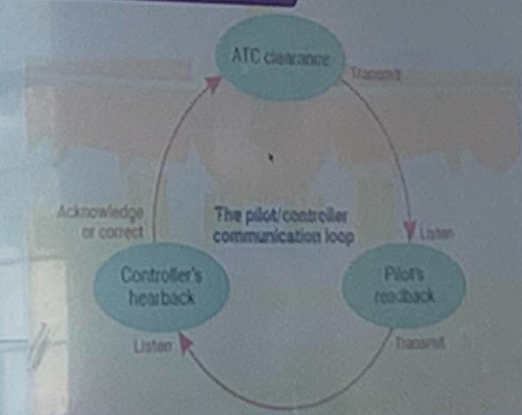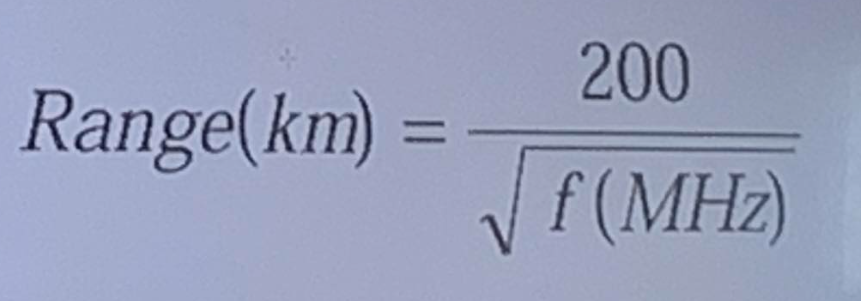[PRELIMS] TRANSMISSION OF INFORMATION USING RADIOTELEPHONY
1/62
There's no tags or description
Looks like no tags are added yet.
Name | Mastery | Learn | Test | Matching | Spaced |
|---|
No study sessions yet.
63 Terms
General Operating Procedures
Pilots and air traffic controllers communicate by using the radiotelephony phraseology that consists of a set of standardized words and phrases approved for the radiotelephony communications by ICAO in all routine aircraft situations.
When both parties stick to the rules prescribed, problems in communication will rarely occur.
First of all, good transmitting techniques are needed.
Transmitting Technique
ICAO Doc 9432 Manual of Radiotelephony - the following transmitting techniques will assist in ensuring that transmitted speech is clearly and satisfactorily received
ICAO Doc 9432 Manual of Radiotelephony
transmitting techniques will assist in ensuring that transmitted speech is clearly and satisfactorily received
Before transmitting, listen out on the frequency to be used to ensure that there will be no interference with a transmission from another station
Be familiar with good microphone operating techniques.
Use a normal conversational tone, speak clearly and distinctly.
Maintain an even rate of speech not exceeding 100 words per minute.
Maintain the speaking volume at a constant level.
A slight pause before and after numbers will assist in making it easier to understand.
Avoid using hesitation sounds such as "er'.
Depress the transmit switch fully before speaking and do not release it until the message is completed. This will ensure that the entire message is transmitted.
An irritating and potentially dangerous situation in radiotelephony is a “stuck’' microphone button.
Transmitting Techniques

ATC Clearance
Transmit
Listen
Pilot’s Feedback
Transmit
Listen
Controller’s hearback
Acknowledge or Correc
Cycle of Transmitting Technique
The phonetic words shall be used when individual letters are required to be transmitted.
Some abbreviations have become unmistakable through common usage and are transmitted without using the phonetic word for each letter (E.G
ILS, QNH, QFE)
The following words are to be used when it is required to transmit individual letters.
Rules of Transmission of Letters
Phonetic Words
shall be used when individual letters are required to be transmitted.
Abbreviations
Some ________ have become unmistakable through common usage and are transmitted without using the phonetic word for each letter (E.G ILS, QNH, QFE)
All numbers except whole hundreds, whole thousands and combinations of thousands and whole hundreds shall be transmitted by pronouncing each digit separately.
Whole hundreds and whole thousands shall be transmitted by pronouncing each digit in the number of hundreds or thousand followed by the word HUNDRED or TOUSAND as appropriate
Rules of Transmission of Numbers
except:
except whole hundreds,
whole thousands
combinations of thousands
whole hundreds
All numbers ____________ shall be transmitted by pronouncing each digit separately.
pronouncing each digit in the number of hundreds or thousand followed by the word HUNDRED or TOUSAND as appropriate
Whole hundreds and whole thousands shall be transmitted by
All time references should be made in Co-ordinated universal time (UTC). This used to be called Greenwich Mean Time (GMT).
This time zone is sometimes referred to as Zulu (Z).
Time is always in the 24 hour clock. 2400 is midnight and 0001 begins the new day.
When transmitting time, only the minutes of the hour are normally required, each figure being pronounced separately.
Rules in Transmission of Time
Co-ordinated universal time (UTC
All time references should be made in
This used to be called Greenwich Mean Time (GMT).
This time zone is sometimes referred to as Zulu (Z)
Aeronautical Stations
are identified by the name of the location, followed by a suffix denoting unit or the type of service provided.
CONTROL
AREA CONTROL CENTER
RADAR
RADAR (IN GENERAL
APPROACH
APPROACH CONTROL
ARRIVAL
APPROACH CONTROL RADAR ARRIVALS
DEPARTURE
APPROACH CONTROL DEPARTURES
TOWER
AERODROME CONTROL
GROUND
SURFACE MOVEMENT CONTROL
DELIVERY
CLEARANCE DELIVERY
PRECISION
PRECISION APPROACH RADAR
HOMER
DIRECTION FINDING STATION
INFORMATION
FLIGHT INFORMATION SERVICE
APRON
APRON CONTROL
DISPATCH
COMPANY DISPATCH
RADIO
AERONAUTICAL STATION
Categories of Message and Order of Priority
According to ICAO, Annex 10, Chapter 5 All the communication between pilots and air traffic controllers can be categorized into 6 categories of messages depending on the priority of information being transmitted
ICAO, Annex 10, Chapter 5
All the communication between pilots and air traffic controllers can be categorized into 6 categories of messages depending on the priority of information being transmitted.
Croatian regulations (AIC 403/08)
distinguishes the 7th type, called state telegram.
Distress Calls, Distress Messages, And Distress Traffic
Urgency Messages
Direction Finding Message/ Communication Relating To Direction Finding
Flight Safety
Meteorological Messages
Flight Regularity Messages
State Telegram
Categories of Message and Order of Priority
Distress Calls, Distress Messages, And Distress Traffic
A condition of being threatened by serious and or imminent danger and of requiring immediate assistance
MAYDAY - radiotelephony signal
Urgency Messages
including messages preceded by the medical transports signal.
A condition concerning the safety of an aircraft but does not require immediate assistance.
PAN,PAN or PAN, PAN MEDICAL - radiotelephony signal
Medical transport
any means of transportation by land, water, or air, wes military or civilian, permanent or temporary assigned exclusively to medic transportation and under the control of a competent authority of a Party to conflict.
Direction Finding Message/ Communication Relating To Direction Finding
VDF using Q codes, radar vectors
Flight Safety
movement and control messages originated by an aircraft operating agency or by an aircraft, of immediate concern to an aircraft in flight
meteorological advice of immediate concern to an aircraft in flight or about to depart (individually communicated or for broadcast):
Other messages concerning aircraft in flight or about to depart.
Meteorological Messages
reports, forecasts, warnings; comprise meteorological information to or from aircraft.
Flight Regularity Messages
messages regarding the operation or maintenance of facilities essential for the safety or regularity of aircraft operation;
State Telegram
New category
Ground-wave Propagation
Sky-wave Propagation
Line-of-sight (LOS) Propagation
Non Line-of-sight (NLOS) Propagation
Wave Polarization
Basics of Radiowave Propagation
Ground-wave Propagation
The radio waves follow contour of the earth.
The radio waves can Propagate considerable distances.
Direct Wave + Reflected Wave + Surface Wave
Formula of ground wave
Medium Wave frequencies (300kHz to 3MHz)
lower HF bands (3MHz to 30MHz
Frequency of Ground Wave Propagation
Frequency
Polarization
Location
Ground Conductivity
The range of Ground-wave propagation depends upon:

The surface waves die more quickly as the frequency increases:
Sky-wave Propagation
In radio communication, skywave or skip refers to the propagation of radio waves reflected or refracted back toward Earth from the ionosphere, an electrically charged layer of the upper atmosphere.
Since it is not limited by the curvature of the Earth, skywave propagation can be used to communicate beyond the horizon, at intercontinental distances.
Directly from one point to another.
Along the ground, bending slightly to follow the curvature of the Earth for some distance.
Sky-wave Propagation (Short Waves) generally travel to their destination in four ways:
3MHz - 30 MHz
frequency of short wave propagation
Maximum Usable Frequency (MUF)
The highest frequency at which the ionosphere bends radio waves back to a desired location on Earth.
The MUF for communication between two points depends on solar radiation strength and the time of day.
When sunspots are low, radiation and the MUF are lower.
HF (shortwaves) communication
is enhanced during times of greater sunspot activity.
LINE-OF-SIGHT PROPAGATION (LOS)
Is a characteristic of electromagnetic radiation or acoustic wave acoustic propagation which means waves travel in a direct path from the source to the receiver.
Electromagnetic transmission
includes light emissions traveling in a straight line.
direct path between the transmitter and receiver considering the curvature of radiowave trajectory.
main route of line-of-sight (LOS) radiocommunication
Non-line-of-Sight (NLOS)
is a radio transmission across a path that is partially obstructed, usually by a physical object in the innermost Fresnel zone.
buildings,
trees, hills,
mountains,
high voltage electric power lines.
Obstacles that commonly cause NLOS conditions include:
Wave Polarization
The plane of polarization of a radio wave is the plane in which the E-field propagates with respect to the Earth.
Vertically Polarized
In wave polarization, If the E-field component of the radiated wave travels in a plane perpendicular to the Earth's surface (vertical), the radiation is said to be
Circular Polarization
produces an electric field that rotates as it travels.
RIGHT HAND CIRCULAR
LEFT-HAND CIRCULAR
Circular polarization falls into two categories, depending on the direction of rotation:
The polarization of a radio wave can rotate as it propagates.
If a Linear polarized wave (vertical or horizontal) reflects off a surface that is not vertical or horizontal, its polarization will be changed.
Free space loss
Ducting
Attenuation and Scattering
Refraction
Atmospheric absorption
Reflection
Multipath and Fading
LINE-OF-SIGHT WIRELESS TRANSMISSION IMPAIRMENTS: